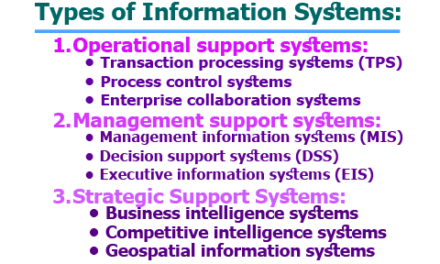The Process of Knowledge Discovery Using Data Mining:
Knowledge Discovery in Databases (KDD) is a process that involves the extraction of valuable insights, patterns, and knowledge from large volumes of data. Within the realm of KDD, data mining plays a crucial role in uncovering hidden patterns and relationships within diverse datasets. In this context, a database serves as a fundamental source of raw data, acting as a reservoir of information that can be harnessed through data mining techniques. The data mining process typically begins with the integration of data from various sources, such as databases, flat files, and other storage mechanisms, into a consolidated repository known as a Data Warehouse. This integration is not a straightforward task, and before data is stored in a warehouse, a series of preprocessing techniques must be applied. These techniques, including data cleaning, integration, selection, and transformation, are collectively termed as Data Preprocessing. They are essential for ensuring that the data is accurate, consistent, and ready for the subsequent data mining stages. Here we will explore the process of knowledge discovery using data mining.
Data Preprocessing Techniques:
Data preprocessing is a crucial phase in the KDD process, serving as the bridge between raw data and effective data mining. It involves the application of various techniques to ensure that the data is clean, integrated, relevant, and suitable for analysis. The primary data preprocessing techniques include:
1. Data Cleaning:
Objective: The removal of inconsistencies and errors from the data.
Examples of Inconsistencies: Missing values, noise, typographic errors.
Techniques:
- Imputation: Filling in missing values using methods like mean, median, or interpolation.
- Outlier Detection and Handling: Identifying and addressing data points significantly deviating from the norm.
- Noise Reduction: Smoothing techniques or filtering to reduce irrelevant or random variations.
2. Data Integration:
Objective: The process of combining data from multiple sources into a single repository (Data Warehouse).
Sources: Files, databases, data cubes.
Challenges:
- Schema Integration: Resolving differences in structure and naming conventions.
- Redundancy Handling: Detecting and eliminating redundant information.
- Consistency Maintenance: Ensuring uniformity in units, formats, and representations.
3. Data Selection:
Objective: Retrieving relevant data from the Data Warehouse.
Methods:
- Querying: Defining queries to extract specific subsets of data.
- Sampling: Selecting a representative subset of the data for analysis.
- Dimensionality Reduction: Reducing the number of features to focus on the most relevant ones.
4. Data Transformation:
Objective: Converting data into a suitable form for mining.
Techniques:
- Aggregation: Combining data to create more concise and informative representations.
- Generalization: Replacing detailed data with high-level abstractions.
- Normalization: Scaling numerical attributes to a standard range.
- Data Reduction: Techniques like Principal Component Analysis (PCA), Feature Selection, and Feature Extraction.
Focus on Data Reduction Techniques:
Feature Selection: Choosing a subset of relevant features for analysis, discarding less informative ones.
Feature Extraction: Creating new features that capture the essential information from the original dataset.
Once these preprocessing steps are completed, the data is considered refined and prepared for the subsequent stages of the data mining process.
Mining Process:
The mining process is a crucial phase in the KDD cycle, where patterns, associations, and knowledge are extracted from preprocessed data. This phase involves several key steps, each contributing to the uncovering of valuable insights:
1. Pattern Discovery:
Objective: Uncover hidden patterns in the data.
Methods:
- Association Rule Mining: Identifying relationships between variables, such as “if A then B.”
- Clustering: Grouping similar data points together based on certain characteristics.
- Classification: Assigning predefined labels or categories to data instances.
- Sequential Pattern Mining: Discovering patterns in sequential data, common in time-series or sequence-based datasets.
2. Pattern Evaluation:
Objective: Evaluate uncovered patterns based on interesting measures.
Criteria:
- Support: The frequency of occurrence of a pattern in the dataset.
- Confidence: The reliability of a rule or pattern.
- Lift: The degree to which the presence of one item influences the presence of another.
- Validity: Ensuring patterns are not purely coincidental.
3. Knowledge Representation:
Objective: Representing the discovered patterns and knowledge in a comprehensible form.
Methods:
- Rule-based Systems: Expressing patterns in the form of “if-then” rules.
- Decision Trees: Hierarchical structures representing decision-making processes.
- Graphs: Visualizing relationships and connections between data points.
4. Knowledge Interpretation:
Objective: Understanding and interpreting the implications of the discovered knowledge.
Tasks:
- Contextualization: Placing patterns in the context of the specific problem or domain.
- Validation: Verifying the reliability and relevance of discovered patterns.
- Correlation Analysis: Exploring relationships between different patterns.
5. Presentation of Knowledge:
Objective: Presenting interesting patterns to the user in an understandable and actionable manner.
Techniques:
- Visualization: Graphs, charts, and other visual aids to convey patterns effectively.
- Reports: Detailed documentation summarizing key findings and insights.
- Dashboards: Interactive platforms for users to explore and interact with the discovered knowledge.
In conclusion, the process of knowledge discovery using data mining is a comprehensive journey that begins with well-organized databases and concludes with the presentation of valuable insights to the user. The pivotal role of data preprocessing, encompassing cleaning, integration, selection, and transformation, cannot be overstated, as it lays the foundation for effective mining. Through the careful application of preprocessing techniques, patterns hidden in the data are unveiled, evaluated, and ultimately transformed into actionable knowledge for informed decision-making processes. This cyclical process underscores the iterative nature of knowledge discovery, continually refining and enhancing our understanding of complex datasets.

Library Lecturer at Nurul Amin Degree College










